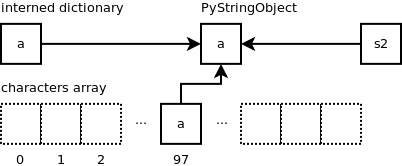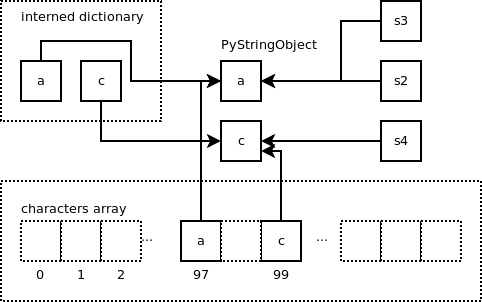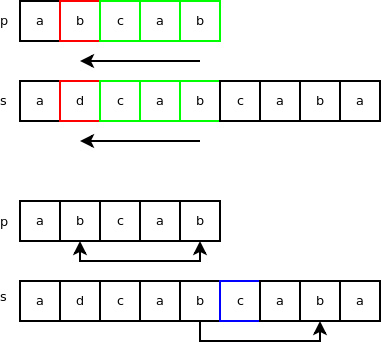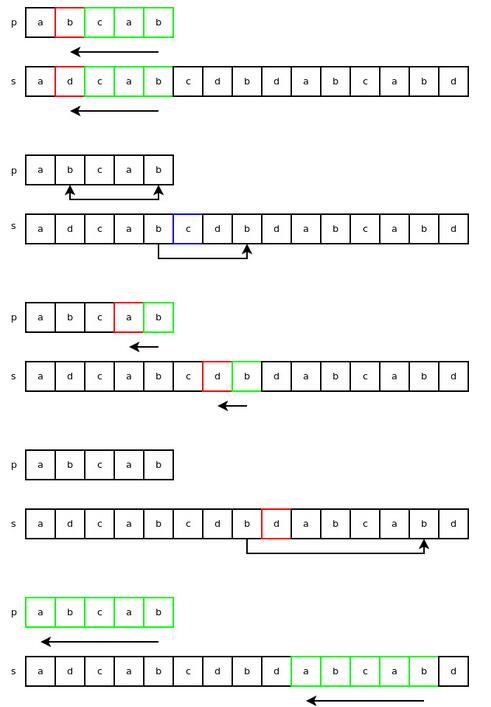详解Python字符串对象的实现
PyStringObject 结构体
Python 中的字符串对象在内部对应一个名叫 PyStringObject 的结构体。“ob_shash” 对应字符串经计算过的 hash值, “ob_sval” 指向一段长度为 “ob_size” 的字符串,且该字符串以‘null'结尾(为了兼容C)。“ob_sval”的初始大小为1个字节,且 ob_sval[0]=0(对应空字符串)。若你还想知道“ob_size”被定义的位置,可以看一看 object.h 头文件中 PyObject_VAR_HEAD 对应部分。“ob_sstate” 用来指示某个字符串是否已经存在于intern机制对应的字典中,后面我们会再次提到这一点。
typedef struct {
PyObject_VAR_HEAD
long ob_shash;
int ob_sstate;
char ob_sval[1];
} PyStringObject;字符串对象的创建
如下所示,当将一个新的字符串赋给一个变量时,发生了什么?
1>>> s1 = 'abc'
运行以上代码时,内部的 C 函数 “PyString_FromString” 将被调用并生成类似下面的伪代码:
arguments: string object: 'abc' returns: Python string object with ob_sval = 'abc' PyString_FromString(string): size = length of string allocate string object + size for 'abc'. ob_sval will be of size: size + 1 copy string to ob_sval return object
每次用到新的字符串时,都将分配一个字符串对象。
共享字符串对象
Python 有一个优雅的特性,就是变量之间的短字符串是共享的,这一特性可以节省所需的内存空间。短字符串就是那些长度为 0 个或者 1 个字节的字符串。而全局变量 “interned” 对应一个用于索引这些短字符串的字典。数组 “characters” 也可用于索引那些长度为 1 个字节的字符串,比如单个字母。后面我们将看到数组 “characters” 是如何被使用的。
static PyStringObject *characters[UCHAR_MAX + 1]; static PyObject *interned;
下面一起看看:当你在 Python 脚本中将一个短字符串赋值给一个变量时,背后发生了哪些事情。
static PyStringObject *characters[UCHAR_MAX + 1]; static PyObject *interned;
内容为 ‘a' 的字符串对象将被添加到 “interned” 字典中。字典中键(key)是一个指向该字符串对象的指针,而对应的值 就是一个相同的指针。在数组 “characters” 中,这一新的字符串对象在偏移量为 97 的位置被引用,因为字符 ‘a' 的ASCII码值便是 97。变量 “s2” 也指向了这一字符串对象。

而,当另外一个变量也被相同的字符串 ‘a' 赋值时,又会如何呢?
1>>> s3 = 'a'
上述代码执行后,将返回之前已创建的内容相同的字符串对象。因此,‘s1' 和 ‘s3' 两个变量都将指向同一个字符串对象。 数组 “characters” 便是用于检测字符串 ‘a' 是否已经存在,若存在,则返回指向该字符串对象的指针。
if (size == 1 && (op = characters[*str & UCHAR_MAX]) != NULL)
{
...
return (PyObject *)op;
}
下面我们新建一个内容为 ‘c' 的短字符串:
1>>> s4 = 'c'
那么,我们将得到如下结果:

我们还能发现,当按照下面 Python 脚本中的方式对一个字符串元素进行访问时,数组 “characters” 仍有用武之地。
>>> s5 = 'abc' >>> s5[0] 'a'
上面第二行代码中,返回的是数组 “characters” 偏移量为 97 的位置内的指针元素,而非新建一个值为 ‘a'的字符串。当我们访问某个字符串中的元素时,一个名叫 “string_item” d的函数将被调用,下方给出了函数体代码。其中,参数 ‘a' 便对应着字符串 “abc”,而参数 ‘i' 便是访问数组的索引值(本例中便为 0 ),函数返回的是指向某个字符串对象的指针。
static PyObject *
string_item(PyStringObject *a, register Py_ssize_t i)
{
char pchar;
PyObject *v;
...
pchar = a->ob_sval[i];
v = (PyObject *)characters[pchar & UCHAR_MAX];
if (v == NULL)
// allocate string
else {
...
Py_INCREF(v);
}
return v;
}
数组 “characters” 也可用于函数名长度为 1 时的情形,如下所示:
>>> def a(): pass
字符串查找
下面看看,当你在如下 Python 代码中进行字符串查找操作时,又会有那些事情发生呢?
>>> s = 'adcabcdbdabcabd'
>>> s.find('abcab')
>>> 11函数 “find” 返回一个索引值,说明是在字符串 “abcd” 的哪个位置找到字符串 “s” 的。若字符串未找到,函数返回值为 -1。
那么,内部到底干了些啥事情?内部调用了一个名为 “fastsearch” 的函数。这个函数是一个介于 BoyerMoore 和 Horspool 算法之间的混合版本,它兼具两者的优良特性。
我们将 “s”(s = ‘adcabcdbdabcabd')称作主字符串,而将 “p”(p = ‘abcab')称作模式串。n 和 m 分别表示字符串 s 和 字符串 p 的长度,其中,n = 15, m = 5。
在如下代码段中,明显看到,程序将进行首次判定:若 m > n,我们就知道必然不能找到这样的索引号,因此函数直接返回 -1 即可。
w = n - m; if (w < 0) return -1;
当 m = 1 时,程序便在字符串 s 中一个个字符地进行遍历,若匹配成功则返回对应的索引位置。在本例中,变量 mode 值为 FAST_SEARCH,意味着我们想获取的是在主字符串中首次匹配的位置,而非模式串在主字符串中成功匹配的次数。
if (m <= 1) {
...
if (mode == FAST_COUNT) {
...
} else {
for (i = 0; i < n; i++)
if (s[i] == p[0])
return i;
}
return -1;
}
考虑其他情况,比如 m > 1。首先创建一个压缩的boyer-moore delta 1 table(对应BM算法中的坏字符规则),在此过程中需要声明两个变量:“mask” 和 “skip”。
“mask” 是一个 32 位的位掩码(bitmask),将其最低的 5 个特征位作为开关位。该掩码是通过和模式串 “p” 进行操作产生的。它设计成一个布隆过滤器(bloom filter),用于检测一个字符是否出现在当前字符串中。这种机制使查找操作十分迅速,但是存在伪正的情况(false positives)。关于布隆过滤器,你想有更多了解的话可以看看 这里 。对于本例,下方说明了位掩码具体是如何产生的。
mlast = m - 1
/* process pattern[:-1] */
for (mask = i = 0; i < mlast; i++) {
mask |= (1 << (p[i] & 0x1F));
}
/* process pattern[-1] outside the loop */
mask |= (1 << (p[mlast] & 0x1F));字符串 “p” 的第一个字符为 ‘a'。字符‘a'的二进制表示为 97 = 1100001。保留最低的 5 个特征位,我们得到了 00001,因此变 “mask” 初次被设定为 10(1 << 1)。当整个字符串 “p” 都经过处理后,mask 值为 1110。那么,我们应该如何使用这个位掩码呢?通过下方这行代码,我们用其来检测字符 “c” 位于字符串 “p” 哪个位置。
if ((mask & (1 << (c & 0x1F))))
那么,字符 ‘a' 在字符串 “p”(‘abcab')中是否存在呢?1110 & (1 << (‘a' & 0X1F)) 运算结果的值是否为 true 呢?由于 1110 & (1 << (‘a' & 0X1F)) = 1110 & 10 = 10,可知 ‘a' 确实存在于 ‘abcab'。当检测字符 ‘d'时,我们得到的是 false,对于其他字符(从 ‘e' 到 ‘z')也是同样结果。因此,在本例中此类过滤器表现十分出众。 变量 “skip” 对应目标字符在主字符串中最后一个成功匹配的字符的索引位置(从后向前匹配)。假若模式串的最后一个匹配字符在主字符串中不存在,则 “skip” 值为 模式串 “p” 的长度减去 1。本例中,模式串最后一个为匹配字符位 ‘b',由于其在主串查找的当前位置向后跳两个字符后能够匹配到,因此变量 “skip” 的值为2。这个变量应用于一种名叫坏字符跳跃(bad-character skip)的规则。在如下示例中,p = ‘abcab',s = ‘adcabcaba'。从主串 “s” 的 4 号索引位置(从 0 开始计算)开始匹配,若字符匹配成功则向前继续匹配。第一个匹配失败的索引位置为 1(此处 ‘b' 不等于 ‘d')。我们可以看到,在模式串和主串最开始匹配的末端位置往后数三个字符,主串中也有一个 ‘b',而字符 ‘c' 也存在于 “p” 中,因此我们跳过了随后的 ‘b'。

下面,看下查找操作的循环部分(真实代码为 C 实现,而非 Python):
for i = 0 to n - m = 13:
if s[i+m-1] == p[m-1]:
if s[i:i+mlast] == p[0:mlast]:
return i
if s[i+m] not in p:
i += m
else:
i += skip
else:
if s[i+m] not in p:
i += m
return -1
“s[i+m] not in p” 这行测试代码是基于位掩码实现的,“i += skip” 便对应坏字符跳跃。当主串下一个待匹配的字符在 “p” 中并未找到时,则执行 “i += m” 这行代码。
下面来看看,对于字符串 “p” 和 “s” 的匹配,算法具体是如何运行的。前三个步骤与上面类似,接着,字符 ‘d' 在字符串 “p” 并未找到,因此我们直接跳过等于“p”字符串长度的字符数,之后便迅速找到了一个匹配。

以上就是带领大家深入了解Python字符串对象实现的整个学习过程,希望对大家学习Python程序设计有所帮助。

Hot AI Tools

Undresser.AI Undress
AI-powered app for creating realistic nude photos

AI Clothes Remover
Online AI tool for removing clothes from photos.

Undress AI Tool
Undress images for free

Clothoff.io
AI clothes remover

AI Hentai Generator
Generate AI Hentai for free.

Hot Article

Hot Tools

Notepad++7.3.1
Easy-to-use and free code editor

SublimeText3 Chinese version
Chinese version, very easy to use

Zend Studio 13.0.1
Powerful PHP integrated development environment

Dreamweaver CS6
Visual web development tools

SublimeText3 Mac version
God-level code editing software (SublimeText3)

Hot Topics
 1376
1376
 52
52
 Do mysql need to pay
Apr 08, 2025 pm 05:36 PM
Do mysql need to pay
Apr 08, 2025 pm 05:36 PM
MySQL has a free community version and a paid enterprise version. The community version can be used and modified for free, but the support is limited and is suitable for applications with low stability requirements and strong technical capabilities. The Enterprise Edition provides comprehensive commercial support for applications that require a stable, reliable, high-performance database and willing to pay for support. Factors considered when choosing a version include application criticality, budgeting, and technical skills. There is no perfect option, only the most suitable option, and you need to choose carefully according to the specific situation.
 How to use mysql after installation
Apr 08, 2025 am 11:48 AM
How to use mysql after installation
Apr 08, 2025 am 11:48 AM
The article introduces the operation of MySQL database. First, you need to install a MySQL client, such as MySQLWorkbench or command line client. 1. Use the mysql-uroot-p command to connect to the server and log in with the root account password; 2. Use CREATEDATABASE to create a database, and USE select a database; 3. Use CREATETABLE to create a table, define fields and data types; 4. Use INSERTINTO to insert data, query data, update data by UPDATE, and delete data by DELETE. Only by mastering these steps, learning to deal with common problems and optimizing database performance can you use MySQL efficiently.
 MySQL can't be installed after downloading
Apr 08, 2025 am 11:24 AM
MySQL can't be installed after downloading
Apr 08, 2025 am 11:24 AM
The main reasons for MySQL installation failure are: 1. Permission issues, you need to run as an administrator or use the sudo command; 2. Dependencies are missing, and you need to install relevant development packages; 3. Port conflicts, you need to close the program that occupies port 3306 or modify the configuration file; 4. The installation package is corrupt, you need to download and verify the integrity; 5. The environment variable is incorrectly configured, and the environment variables must be correctly configured according to the operating system. Solve these problems and carefully check each step to successfully install MySQL.
 MySQL download file is damaged and cannot be installed. Repair solution
Apr 08, 2025 am 11:21 AM
MySQL download file is damaged and cannot be installed. Repair solution
Apr 08, 2025 am 11:21 AM
MySQL download file is corrupt, what should I do? Alas, if you download MySQL, you can encounter file corruption. It’s really not easy these days! This article will talk about how to solve this problem so that everyone can avoid detours. After reading it, you can not only repair the damaged MySQL installation package, but also have a deeper understanding of the download and installation process to avoid getting stuck in the future. Let’s first talk about why downloading files is damaged. There are many reasons for this. Network problems are the culprit. Interruption in the download process and instability in the network may lead to file corruption. There is also the problem with the download source itself. The server file itself is broken, and of course it is also broken when you download it. In addition, excessive "passionate" scanning of some antivirus software may also cause file corruption. Diagnostic problem: Determine if the file is really corrupt
 Solutions to the service that cannot be started after MySQL installation
Apr 08, 2025 am 11:18 AM
Solutions to the service that cannot be started after MySQL installation
Apr 08, 2025 am 11:18 AM
MySQL refused to start? Don’t panic, let’s check it out! Many friends found that the service could not be started after installing MySQL, and they were so anxious! Don’t worry, this article will take you to deal with it calmly and find out the mastermind behind it! After reading it, you can not only solve this problem, but also improve your understanding of MySQL services and your ideas for troubleshooting problems, and become a more powerful database administrator! The MySQL service failed to start, and there are many reasons, ranging from simple configuration errors to complex system problems. Let’s start with the most common aspects. Basic knowledge: A brief description of the service startup process MySQL service startup. Simply put, the operating system loads MySQL-related files and then starts the MySQL daemon. This involves configuration
 How to optimize database performance after mysql installation
Apr 08, 2025 am 11:36 AM
How to optimize database performance after mysql installation
Apr 08, 2025 am 11:36 AM
MySQL performance optimization needs to start from three aspects: installation configuration, indexing and query optimization, monitoring and tuning. 1. After installation, you need to adjust the my.cnf file according to the server configuration, such as the innodb_buffer_pool_size parameter, and close query_cache_size; 2. Create a suitable index to avoid excessive indexes, and optimize query statements, such as using the EXPLAIN command to analyze the execution plan; 3. Use MySQL's own monitoring tool (SHOWPROCESSLIST, SHOWSTATUS) to monitor the database health, and regularly back up and organize the database. Only by continuously optimizing these steps can the performance of MySQL database be improved.
 How to optimize MySQL performance for high-load applications?
Apr 08, 2025 pm 06:03 PM
How to optimize MySQL performance for high-load applications?
Apr 08, 2025 pm 06:03 PM
MySQL database performance optimization guide In resource-intensive applications, MySQL database plays a crucial role and is responsible for managing massive transactions. However, as the scale of application expands, database performance bottlenecks often become a constraint. This article will explore a series of effective MySQL performance optimization strategies to ensure that your application remains efficient and responsive under high loads. We will combine actual cases to explain in-depth key technologies such as indexing, query optimization, database design and caching. 1. Database architecture design and optimized database architecture is the cornerstone of MySQL performance optimization. Here are some core principles: Selecting the right data type and selecting the smallest data type that meets the needs can not only save storage space, but also improve data processing speed.
 Does mysql need the internet
Apr 08, 2025 pm 02:18 PM
Does mysql need the internet
Apr 08, 2025 pm 02:18 PM
MySQL can run without network connections for basic data storage and management. However, network connection is required for interaction with other systems, remote access, or using advanced features such as replication and clustering. Additionally, security measures (such as firewalls), performance optimization (choose the right network connection), and data backup are critical to connecting to the Internet.




